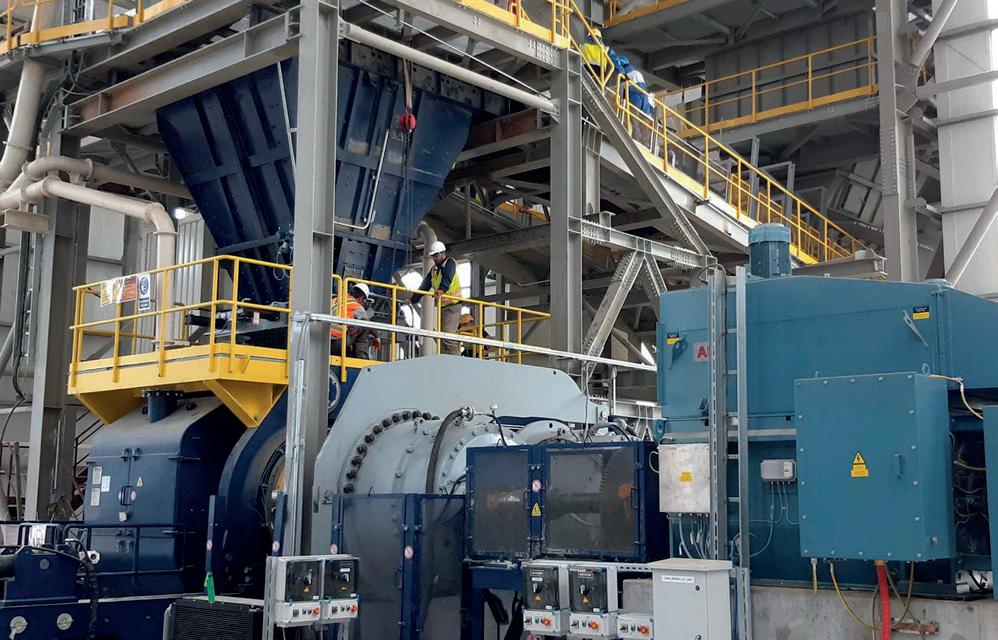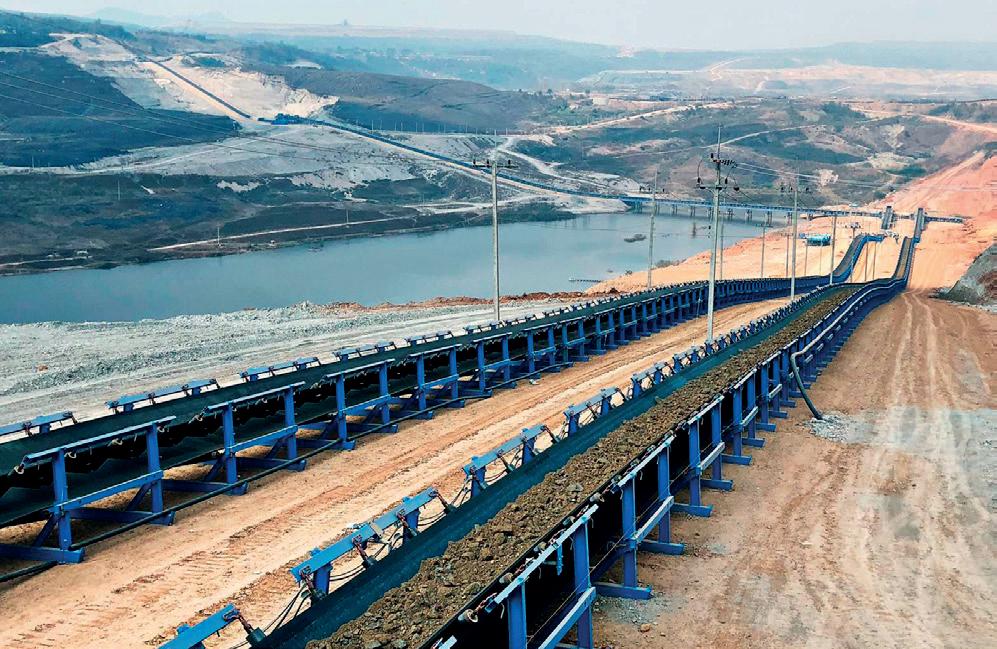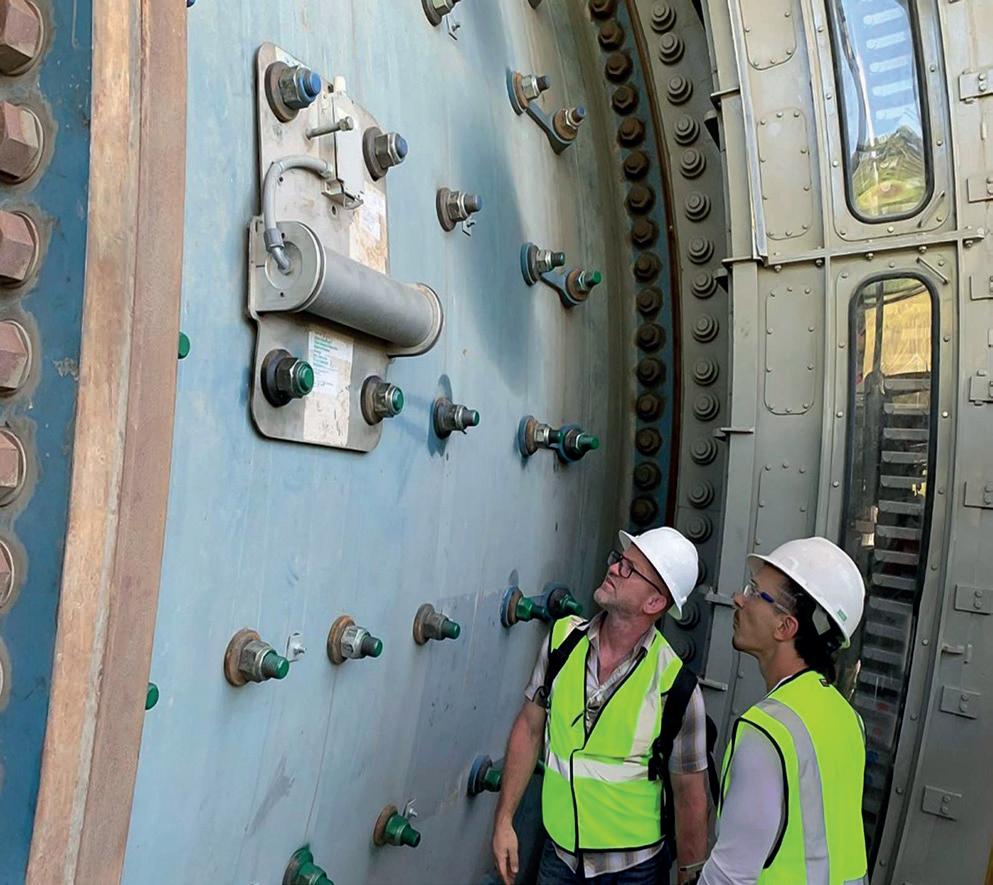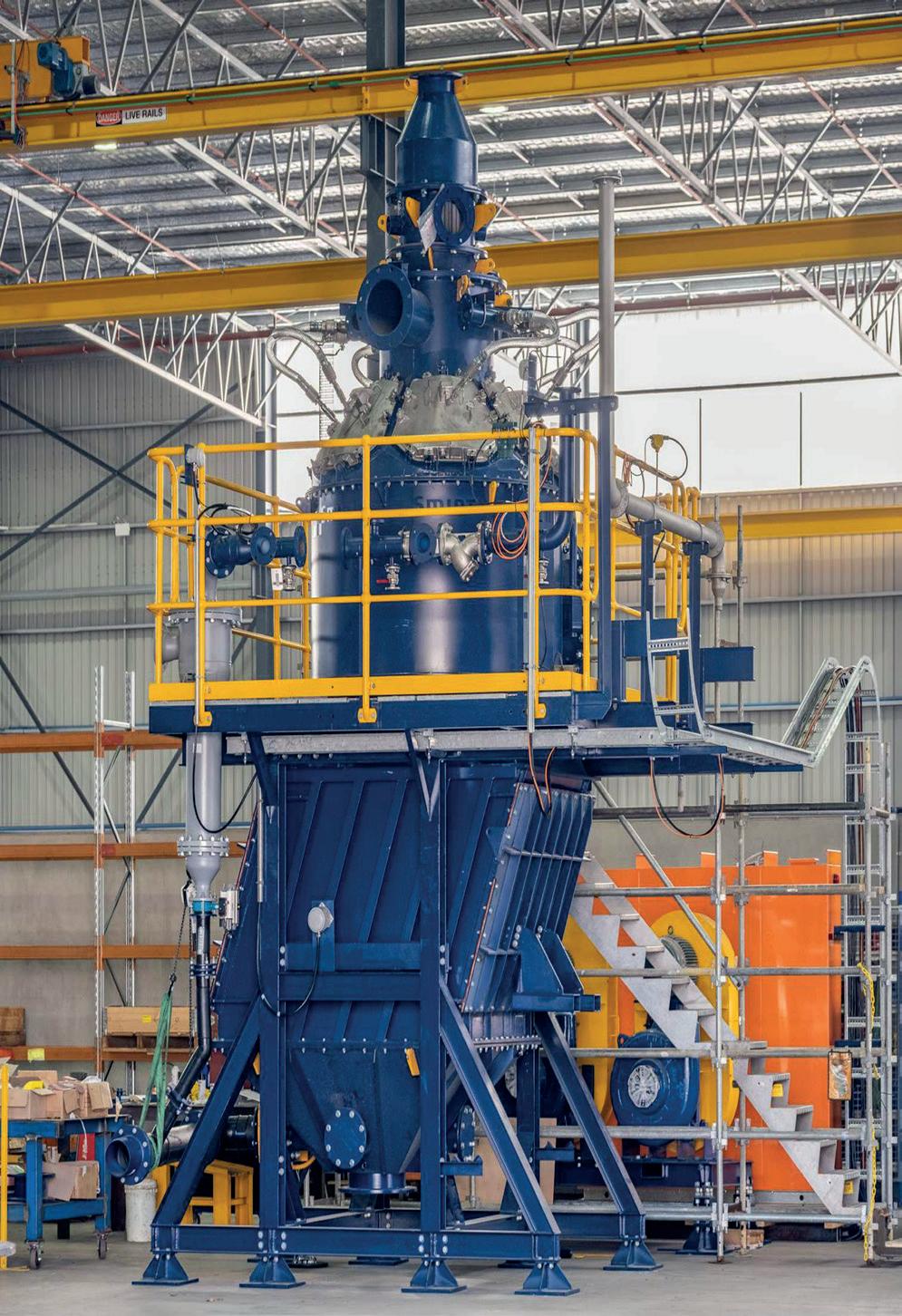
8 minute read
The Mining Industry And The Green Energy Future
William Leahy, FLSmidth, Denmark, discusses the critical role the mining industry plays in meeting the goals of the Paris Climate Agreement and limiting global warming.
The mining industry has a changing and increasingly crucial role in society. It is a — if not the — enabler industry for a low-carbon, green energy future. It is certain to play a pivotal role in helping meet the goals of the Paris Climate Agreement to limit global warming to approximately 1.5˚C Looking at the numbers: A typical wind turbine needs 11 minerals, including: aluminium, copper, nickel, manganese, and iron. A regular electrical vehicle (EV) requires eight minerals; with copper, lithium, cobalt, and nickel all playing a vital role. Solar PVs (photovoltaics) need aluminium, copper, nickel, silver and zinc, amongst others. Even carbon capture technologies are reliant on seven different minerals and metals.
With an increasing demand for minerals to create a greener future, mining must be able to provide the amount of metals and minerals needed — and do so responsibly, with the smallest footprint possible. The areas that come most under the spotlight are water use and management, emissions and energy use, even as energy increasingly becomes more sustainably sourced.
Do not waste your energy…
Inefficient energy use in mining is a massive cost, a drain on resources, and a creator of direct and indirect emissions. Energy is one of the biggest expenses for mining companies, constituting approximately 30% of total cash operating costs.
Finding ways to optimise energy use is a primary focus of miners as they look to meet ambitious climate goals. And these goals go beyond large, Tier-1 miners — over the last few years — both large and mid-size mining companies have been lining up to announce ambitious CO2 reduction targets as part of overall sustainability goals. The Swedish company,
Boliden, for example, have announced that they will reduce their emissions by 40% by 2030.
It is noticeable that a growing trend in the industry is the reduction of carbon emissions through cutting the power needed to run the processing plant. Many plants are fuelled by fossil fuels so there is clear overlap with emission reductions and energy savings.
The focus is justified. The mining industry represents 3 – 4% of the world’s CO2 emissions, while some statistics have claimed that the entire mining industry consumes approximately 12 EJ/yr — or 3.5% of the total energy consumption globally. In Australia, for instance, energy consumption and intensity in mining and mineral processing is rising at around 6%/yr, largely due to the declining grade of ore bodies and the rising amount of waste that must be removed to access them.
Putting energy into finding solutions
These numbers are part of the reason why FLSmidth launched its MissionZero ambition in 2019. MissionZero aims to enable miners to reduce their water waste, emissions, and energy waste to zero by 2030 through efficient equipment, digital optimisation, and in-depth service audits.
Getting energy use to an optimised level will involve the development of innovative technologies, rethinking the extraction process, implementing digital solutions in areas such as process optimisation, and by driving faster adoption. By FLSmidth’s estimates, based off its MissionZero Mine model, there are technologies available now or in the near future that can save 30% energy across the flowsheet.

Figure 1. High Pressure Grinding Roll-1600px (HPGR).

Figure 2. FLSmidth conveyors at work in Thailand.
Where is energy used in the mining flowsheet?
The four areas of the mining flowsheet that use the most energy are crushing and grinding (approximately 45 – 50%), leaching and absorption (approximately 20%), excavation and hauling (approximately 10%), and flotation and concentration (approximately 5 – 7%). Comminution of gold and copper ores alone can be expected to consume about 0.2% of global electricity consumption.
The mill (defined as crushing, grinding, and separation) typically accounts for 35 – 50% of the total mine’s OPEX costs, largely related to energy consumption. In general, comminution is extraordinarily energy-intensive, using 2 – 3% of the electrical energy consumed worldwide energy.1
Additionally, the comminution process is also estimated to be only 1% efficient, resulting in waste energy dissipated as heat, noise, and vibration.2
Towards a low-impact grinding circuit
Traditional horizontal grinding mills are relatively inefficient – large amounts of energy are consumed just turning the mill and lifting the grinding media – and energy is simply wasted through the high number of random actions within the mill during operation.
Utilising a high pressure grinding roll (HPGR), or a solution like the FLSmidth OK™ Mill, for primary grinding not only minimises environmental impact by operating the most efficient tools available, but literally reduces the actual impacts that normally occur in the grinding circuit by replacing the traditional SAG and ball mills and associated grinding media.
The HPGR is a dry grinding machine and, when configured with air classification, delivers a 100% water-free comminution circuit. The FLSmidth R&D Team have estimated that by eliminating SAG and ball mill grinding, media can save up to 100 000 tpy of CO2, with the circuit delivering power savings of 20 – 30% versus traditional SAG mill circuits.
Trade-off studies and analysis of operating plants dating back to 2006 show power savings in the range of 17 – 25% when replacing a SAG mill with a HPGR. The use of the OK Mill in mining is still conceptual, but high-level trade-off studies have observed power savings of approximately 20%.
Truckless mining
Loading and hauling with diesel-fuelled mobile plant can be a large source of greenhouse gas emissions from the mine — and it is energy inefficient. Haul trucks can employ more than 60% of energy used to just move themselves, while they also make multiple empty journeys.
Crushing ore in the pit and substituting trucks with continuous material transportation on belt conveyors powered with electric drives will significantly reduce emissions and make energy use more efficient. Conveyors rarely run empty, and use, on average, more than 80% of energy to move mined material.
A case study at an iron ore mine in Brazil showed that when conveyors replaced 100 off-highway trucks, it led to a reduction in waste (tyres, filters, and lubricants) and a 77% reduction in fuel consumption.
Pump upgrades can be crucial
Many slurry pumps have not had their performance examined closely since they were installed. A simple pump head replacement can be a low risk, low-cost upgrade – and save energy from between 5 – 10%. The reduction in power consumed is a result of a feature FLSmidth has in nearly all of its pumps: a wear ring. The wear ring allows the gap between the impeller and the suction side of the pump to be closed, eliminating recirculation of slurry within the pump. Recirculation causes a drop in efficiency and an increase in power consumed.
A full pump upgrade can deliver even more impressive result. In one example in Africa, FLSmidth replaced a competitor’s aging pump with one of its own and not only did it improve wear life, but it resulted in a 21% reduction in power usage for the same duty.
The annual reduction was calculated to be approximately 1000 MWh. Putting this in perspective it is equivalent to removing over 90 American households from the grid. And this was just one pump replacement.

Figure 3. The LoadIQ solution monitoring a mill.

Figure 4. REFLUX Flotation Cell (RFC).
Do not look past digital optimisation
Smart Mill Sensor Technology, such as the LoadIQ™, can monitor and adjust mill load and capacity in real time, boosting throughput performance for all grinding conditions, reducing excessive power consumption and increasing energy efficiency.
FLSmidth have seen smart sensors, cutting edge technology and AI-based software work to achieve optimal capacity, resulting in increased throughput and reduced energy consumption. Digital’s benefit in process optimisation is that it can analyse processes in real time so that only the precise amount of energy needed is used, meaning zero energy waste.
Flotation innovation bubbles to the surface
Flotation and concentration use around 7% of a mine energy. A new innovation – coarse flotation – allows coarsely grinded material to be processed. This results in lower comminution costs, improved energy efficiency, and higher throughput. Total flotation energy consumption can be cut by up to 30%.
A second innovation in flotation is the REFLUX Flotation Cell (RFC) which out-performs conventional open tank systems in terms of recovery and stability. A 7-10-fold reduction in required flotation volume results in reduced cross-sectional area, ultimately requiring less air and water when compared to conventional systems. With no direct power input to the RFC, overall energy demand is substantially reduced – often by up to 60%.
Conclusion
By taking a full flowsheet approach to energy optimisation across the mine site, improvements can be easier to identify and can be combined to deliver savings of around 30%. These benefits not only mean a reduced environmental impact but can also mean lower operational costs and improved throughput and reduced downtime. Some solutions, digital innovations for instance, are not even difficult or time intensive to implement and can have a short return on investment timeline. The low-hanging fruit is there to be picked; and it will not even require that much energy.
References:
1. BALLANTYNE, G., and POWELL, M., ‘Benchmarking comminution energy consumption for the processing of copper and gold ores’,
Minerals Engineering, vol. 65, (2014), pp. 109 – 114. 2. BOUCHARD, J., DESBIENS, A., and POULIN, E., ‘Reducing the energy footprint of grinding circuits: the process control paradigm’,
IFAC-PapersOnLine, vol 50(1), (2016), pp. 1163 –1168.







